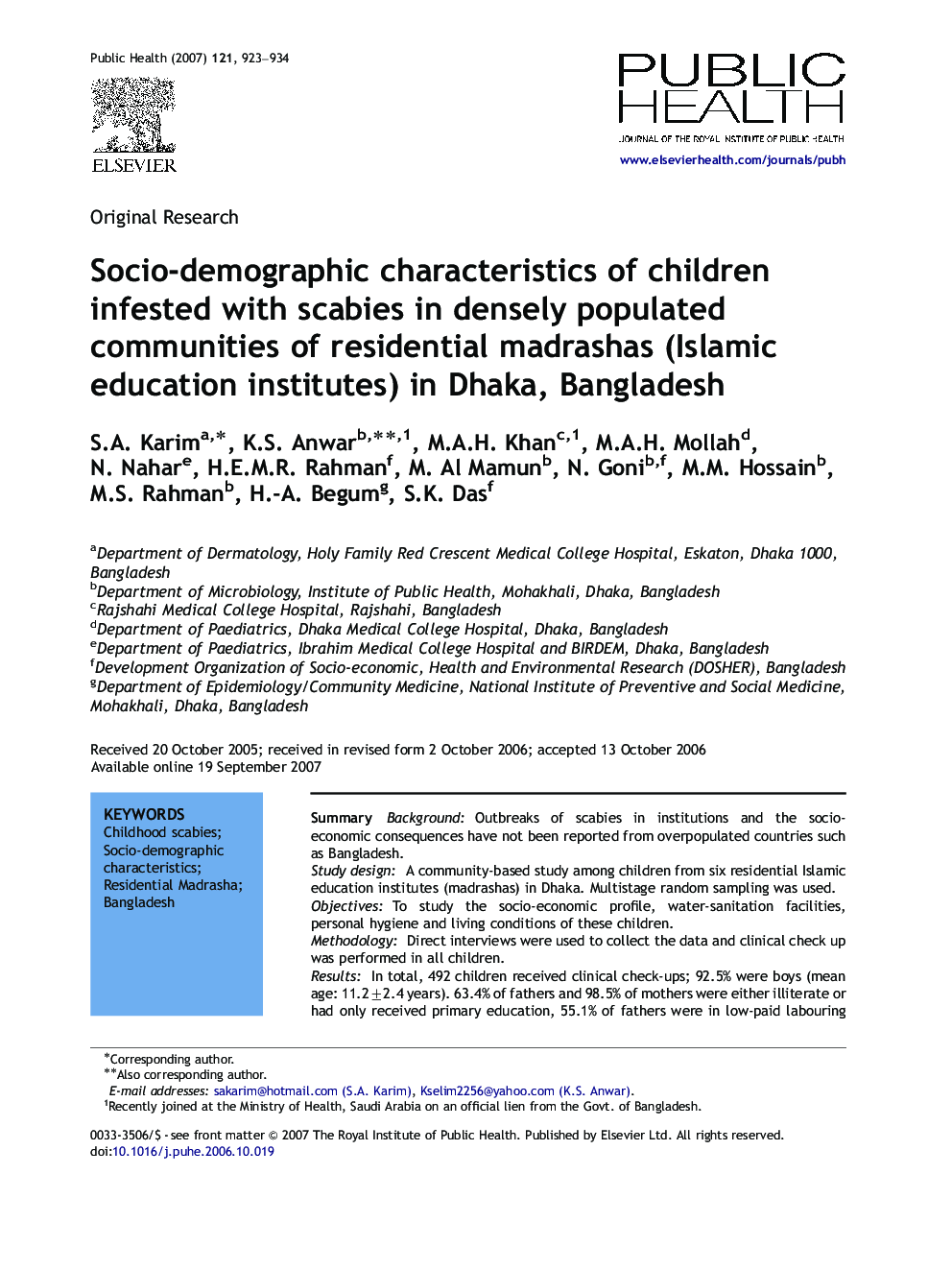| کد مقاله | کد نشریه | سال انتشار | مقاله انگلیسی | نسخه تمام متن |
|---|---|---|---|---|
| 1088567 | 951594 | 2007 | 12 صفحه PDF | دانلود رایگان |

SummaryBackgroundOutbreaks of scabies in institutions and the socio-economic consequences have not been reported from overpopulated countries such as Bangladesh.Study designA community-based study among children from six residential Islamic education institutes (madrashas) in Dhaka. Multistage random sampling was used.ObjectivesTo study the socio-economic profile, water-sanitation facilities, personal hygiene and living conditions of these children.MethodologyDirect interviews were used to collect the data and clinical check up was performed in all children.ResultsIn total, 492 children received clinical check-ups; 92.5% were boys (mean age: 11.2±2.4 years). 63.4% of fathers and 98.5% of mothers were either illiterate or had only received primary education, 55.1% of fathers were in low-paid labouring jobs, and 99% of mothers were housewives. Of the 98% of children who had scabies, 71% had been re-infected (96% during the winter). Randomly assigned anti-scabies drugs revealed an average cure rate of 85.5%. Seventy-four percent of children were living in poorly ventilated buildings with overcrowded sleeping arrangements. They had poor personal hygiene: 21% shared towels; 8% shared undergarments; 30% shared bed linen; and 81% kept their used clothes on a communal line or shelf. Sanitation was also poor: 39% bathed infrequently, although 97% carried out mandatory ablution. Most children (61%) washed their clothes (including undergarments) two or three times a fortnight, 35% did so every 2–3 days, and 3.7% washed their clothes on alternative days. Disease severity and re-infection were associated with infrequent washing of clothes (P<0.001) and bed linen (P<0.001), overcrowded sleeping arrangements (P<0.001) and infrequent bathing (P<0.001) with soap (P<0.001). This was further related to household income (P<0.001 for both).ConclusionThe study findings have potentially dangerous implications for public health. Immediate attention should be given to developing a sustainable long-term intervention programme to combat scabies hyperendemicity, and to save thousands of children from impending complications.
Journal: Public Health - Volume 121, Issue 12, December 2007, Pages 923–934